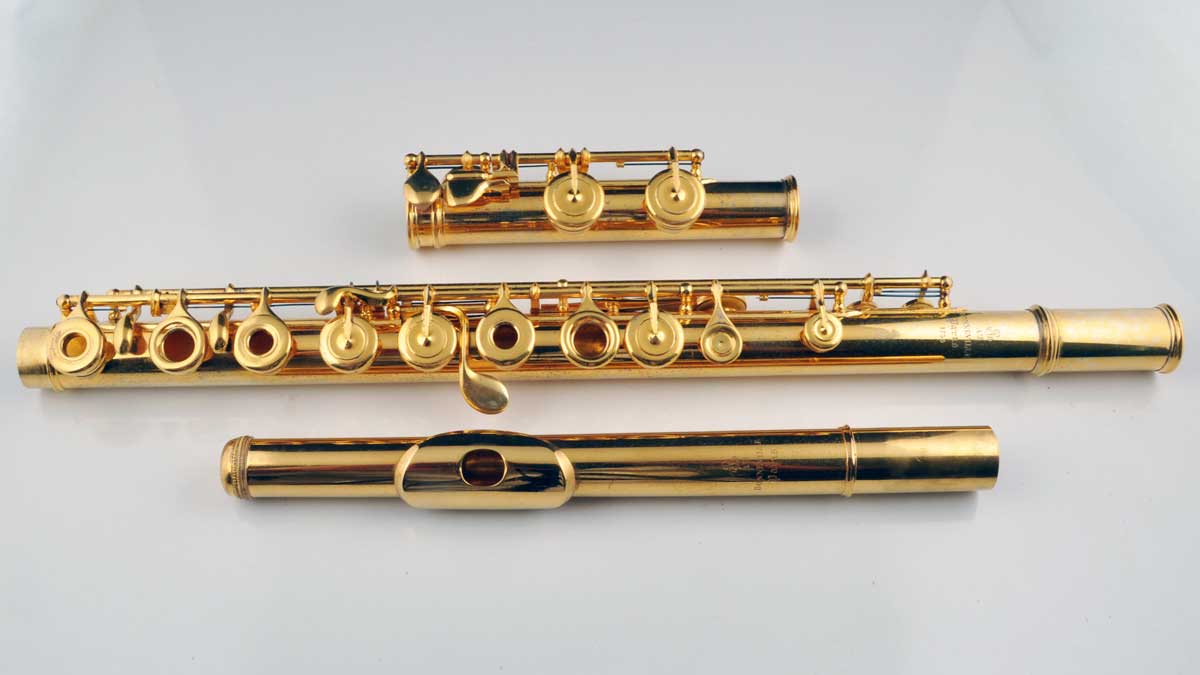Back to Flute Archive
- Made in France, circa 1890
- Gold-plated maillechort
- Seamed tubing
- Tube thickness: 0.014″
- Openhole with ring keys
- Inline G
- C-foot
- A=440 Hz, retuned by wedge tuning
Auguste Bonneville began his career working for the most prestigious flute company in Paris, the firm of Claire Godfroy, Aine. In 1876, he left that firm to start his own business and produced nearly 2000 flutes (predominantly silver-plated maillechort, a type of nickel-brass) before his death. Although the company continued to produce excellent instruments even after his death, flutes with serial numbers #1600 through the early 2000s are consistently superb. The brass instruments from this period are highly regarded for their brilliance and complexity.
Bonneville 1735 is a fine example of the brass Bonneville sound at its best. It is made of gold-plated brass, seamed tubing, and silver embouchure and is handmade to low C. This flute has been entirely resoldered and fully restored. The body has been plated with a double thickness of gold to add warmth and depth to the sound. The gold plating beautifully balances the remarkably vibrant sound of the vintage Bonneville brass to give both warmth and brilliance.
This flute’s original A=435 scale has been brought up to A=440 through a fully reversible wedge system, and the scale is now very even in the left and right hands and in all registers.
This flute’s mechanism features a rare innovation by Bonneville that provides lighter action and simpler adjustment. Two ring keys replace the normal cups of the middle fingers of each hand. Bonneville was so taken with this mechanism that he had it patented in 1888. The idea of ring keys was not new, having been used on the first cylindrical flutes of 1847 and re-introduced by Louis Lot in his Conservatory model of 1860.












Back to Flute Archive
